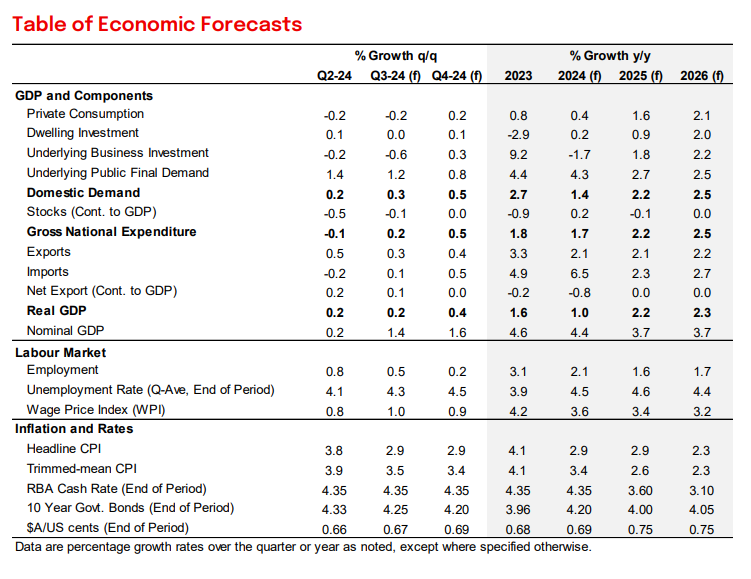

Australia’s economy continues to face sluggish growth, with consumer spending remaining weak and the labour market showing signs of strain, according to NAB.
Alan Oster (pictured above), NAB group chief economist, noted that while employment growth remains steady, rising population growth has pushed the unemployment rate upwards.
Oster forecasts the unemployment rate will reach around 4.5% by the end of the year, with a potential rebound in 2025.
Wage growth has also slowed, with total compensation easing to a 0.9% quarterly increase in Q2, while real household consumption dropped by 0.2%, driven by declines in discretionary spending on goods like transport and dining out.
“Consumption growth is likely to normalise as rate cuts begin in 2025,” Oster said, though he acknowledged that current economic conditions have tempered expectations for any near-term recovery.
See LinkedIn post here.
Australia’s housing market remains a mix of cooling rents and moderate house price increases.
Dwelling investment showed only a modest uptick in Q1, with significant state-by-state variations.
In August, house prices rose by 0.5% nationally, with strong growth in Perth (up 2%), Brisbane (up 1.1%), and Adelaide (up 1.4%). However, Melbourne saw its fifth consecutive month of price declines, falling by 0.2%.
Rents, meanwhile, are stabilising, with capital city advertised rents declining by 0.1% in August. Despite this, low rental vacancy rates and strong housing demand suggest that rents will continue to be supported.
Business investment saw limited growth in Q2, rising just 0.1%. While construction investment increased slightly, machinery and equipment investment fell by 2.4%.
According to NAB’s August Monthly Business Survey, business conditions eased to +3 index points, reflecting ongoing pressure on the private sector.
Exports grew by 0.5% in Q2, driven by a 9.9% increase in services exports, though rural and resource exports experienced declines.
Inflation eased to 3.5% year-on-year in July, largely due to a drop in electricity prices.
Oster predicts inflation will continue to moderate, falling to 3.5% by the end of 2024 and reaching 2.7% by the end of 2025. However, underlying price pressures remain, particularly in the housing sector, where rent inflation is still elevated at 7.9%.
“Progress on disinflation has been slower than expected, but we anticipate further easing as cost pressures begin to abate,” he said.
The Reserve Bank (RBA) is expected to hold the cash rate steady until mid-2025, with the possibility of cuts once inflation stabilises within the 2-3% target range.
Get the hottest and freshest mortgage news delivered right into your inbox. Subscribe now to our FREE daily newsletter.
